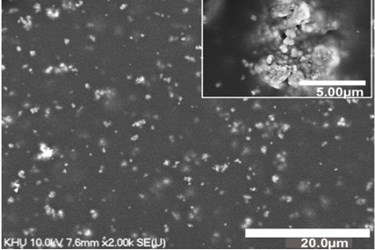Novel Thin Film Could Enable Flexible Electronics For Wearable Devices

In a new advance for flexible electronics, scientists in South Korea have developed a multiferroic film that retains its electric and magnetic properties when curved into a cylinder or stretched. The researchers claim the material has potential in wearable technology.
The material is made of synthesized nanoparticles of bismuth ferrite evenly dispersed in a polyvinyl alcohol polymer. Through a series of steps that heated the solution at increasing temperatures, the solution dried into a thin and bendable film. The multiferroic properties of bismuth ferrite were retained, according to an American Institute of Physics (AIP) press release.
Multiferroic materials can switch magnetism with an electric field, or switch electric polarity with a magnetic field. Researchers propose that electronics made from these materials would be faster and denser, and would consume much less energy. Scientists have been studying multiferroric material candidates for their potential use in next-generation electronics.
YoungPak Lee, a professor at Hanyang University in Seoul, South Korea, explained in the AIP press release that bismuth ferrite was not a strong candidate for this kind of application.
“Bulk bismuth ferrite has crucial problems for some applications, such as a high leakage current which hinders the strong electric properties,” said Lee.
With the addition of the polymer, Lee and his team found that the bismuth ferrite nanoparticles not only retained their multiferroric properties, they improved them. The resulting material was flexible and slightly stretchable.
The study, published in Applied Physics Letters (APL), stated, “The prepared films show high flexibility and their multiferroicities are preserved well even in a high curved condition, reflecting the possibility for fabricating wearable devices based on multiferroic materials.”
Wearable devices made using these films, said Lee in the press release, would have high-density, energy efficient memory and switches.
In other multiferroic materials research, scientists at North Carolina State University (NCSU) explored the combination of barium titanate and lanthanum strontium magnese oxide. The NCSU team hopes to incorporate the technology into a silicon chip to be used in small electronic memory devices.
An article published last year by IEEE Spectrum suggests that multiferroic materials hold huge potential in memory electronics and might be the “ultimate replacement for flash memory.”
Lee and his team plan to continue their development of the film, hoping to find ways of increasing its multiferroic properties and testing materials that would offer even greater flexibility.
Image credit: YoungPak Lee / Hanyang University
